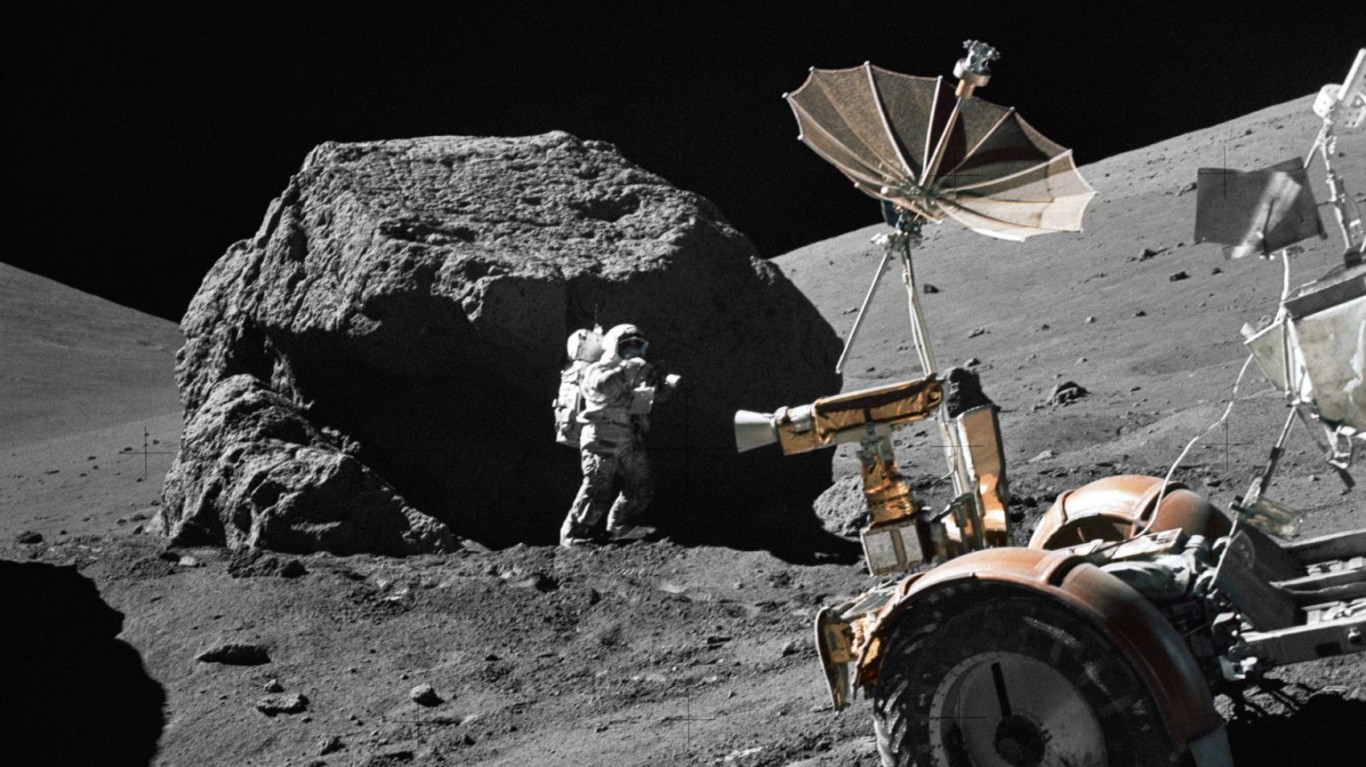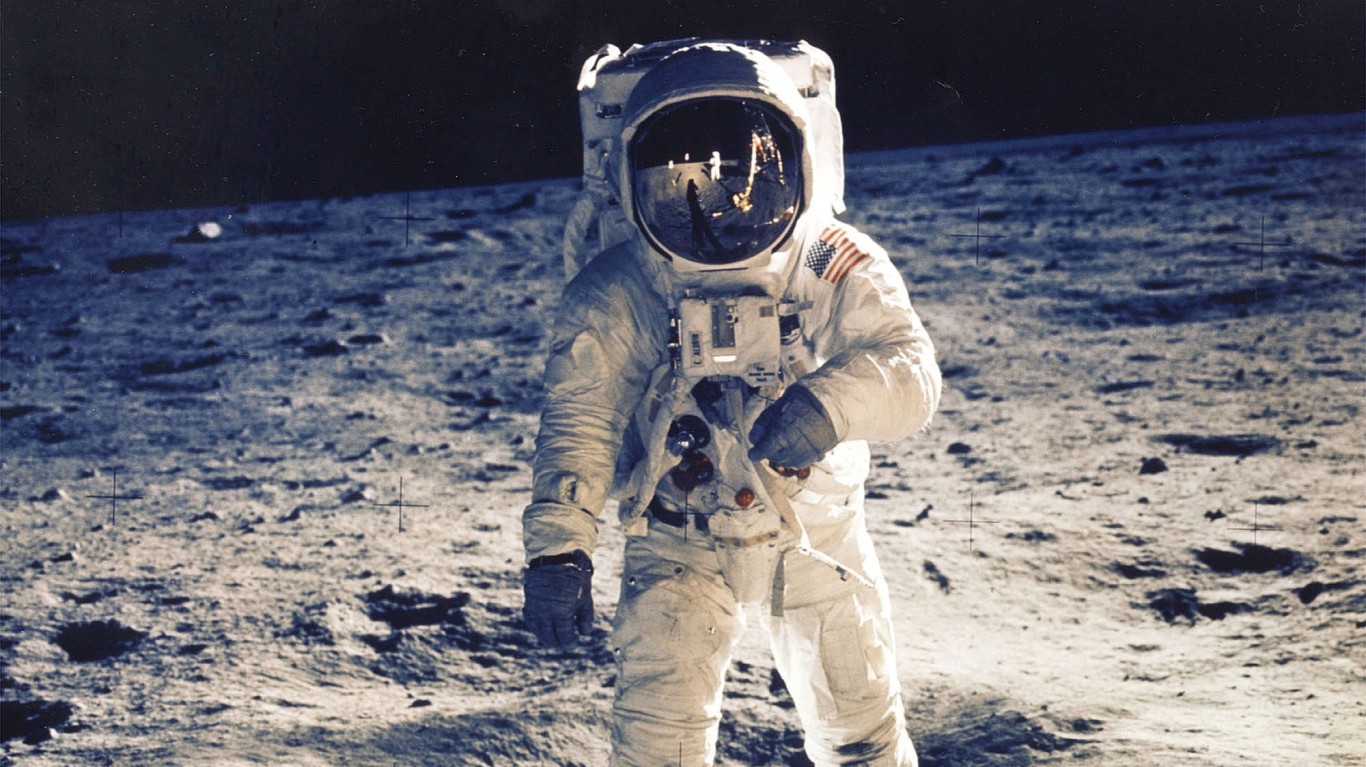
As Apollo 17 splashed down on Dec. 19, 1972, to complete its lunar mission, few people predicted that astronauts Eugene A. Cernan and Harrison H. Schmitt would be the last humans to set foot on the moon for more than 50 years (NASA is planning a return of humans to the moon as early as 2025).
To compile a list of moon shot astronauts and Apollo mission objectives, 24/7 Tempo reviewed resource material including NASA’s Apollo missions page and Space.com. The Apollo 13 mission of April 1970 is not included in this list because it was aborted in flight due to a failure of the oxygen system.
The six Apollo crews who traversed the lunar surface gathered immeasurable scientific information about the moon and its relationship to earth. The 12 crew members who actually walked on the moon belong to one of the world’s most exclusive clubs. They are all white American males, hailing from nine states. All had military backgrounds except Harrison H. Schmitt, from Apollo 17. Schmitt, Buzz Aldrin, David R. Scott, and Charles M. Duke Jr. are the only moonwalkers still alive today. (See the number of space travelers every year since space travel began.)
The objectives of the lunar missions extended far beyond just gathering 850 pounds of moon rocks. Astronauts performed lunar orbital experiments and probed the moon’s mass and gravitational variations. They deployed solar wind composition and seismic instruments. They acted as surveyors, scouting out future landing spots. Their lunar module gave them mobility enabling them to drive as much as 18 miles from the landing site. (These are the most important events in NASA’s history.)
Click here to see every trip ever made to the moon
NASA is planning to return to the moon. Artemis 1 is an uncrewed test flight planned as the first in a series of missions to build an extended human presence on the moon.The launch was delayed twice due to engine problems and was then scheduled for liftoff on Sept. 27. That date was scrubbed, too, because of the approach of Hurricane Ian. A new launch date has not yet been announced.
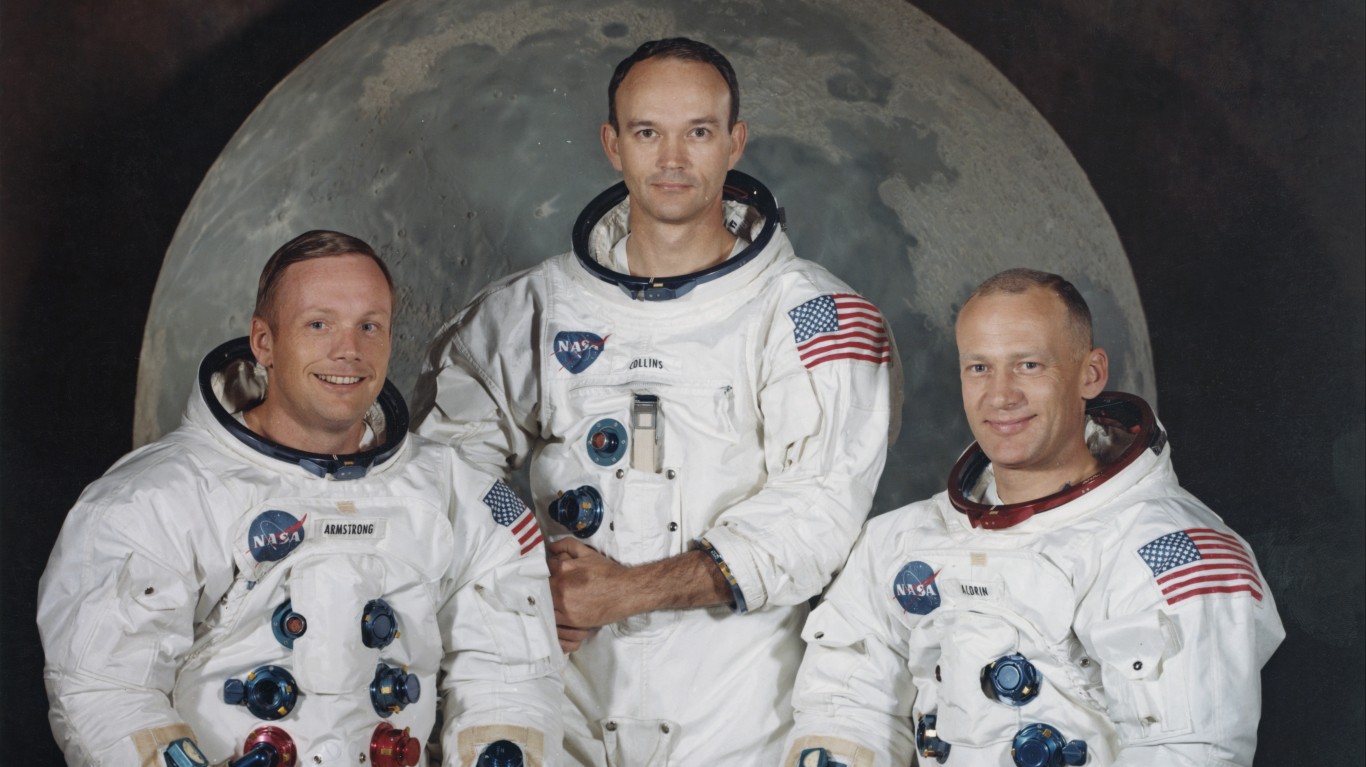
1969: Apollo 11
> Astronauts: Neil Armstrong, Edwin E. Aldrin Jr., Michael Collins
Neil Armstrong, the first person to walk on the moon, became a licensed student pilot at 16, before he got his driver’s license. He and fellow Apollo 11 crew member Edwin “Buzz” Aldrin, the second person to walk on the moon, both served during the Korean War. Before Michael Collins piloted the command module during the Apollo 11 mission, he had become the third American to walk in space during the Gemini X mission in 1966.
[in-text-ad]
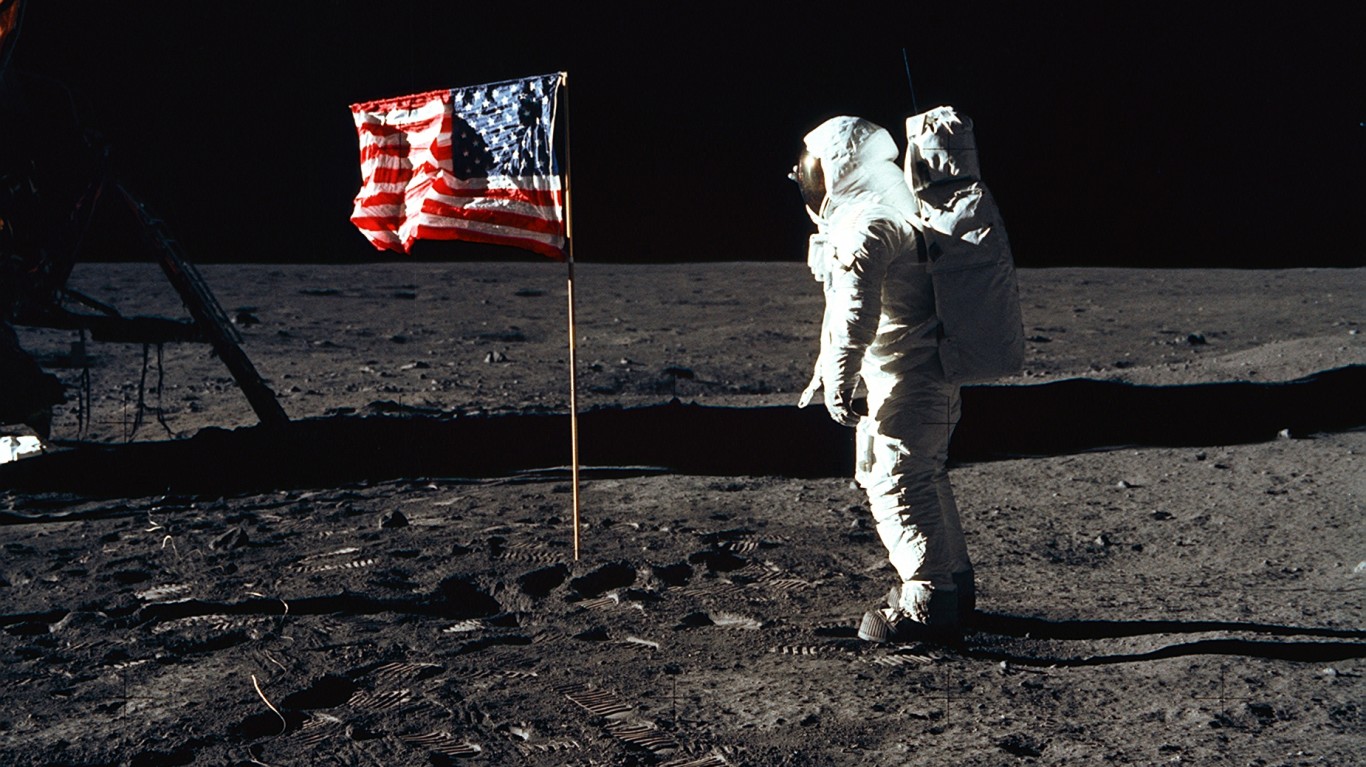
1969: Apollo 11
> Mission goals: Explore the moon’s surface in the lunar module; gather rock and other materials; set up television equipment to return signals back to earth; photograph lunar terrain; deploy solar wind composition and seismic experiment.
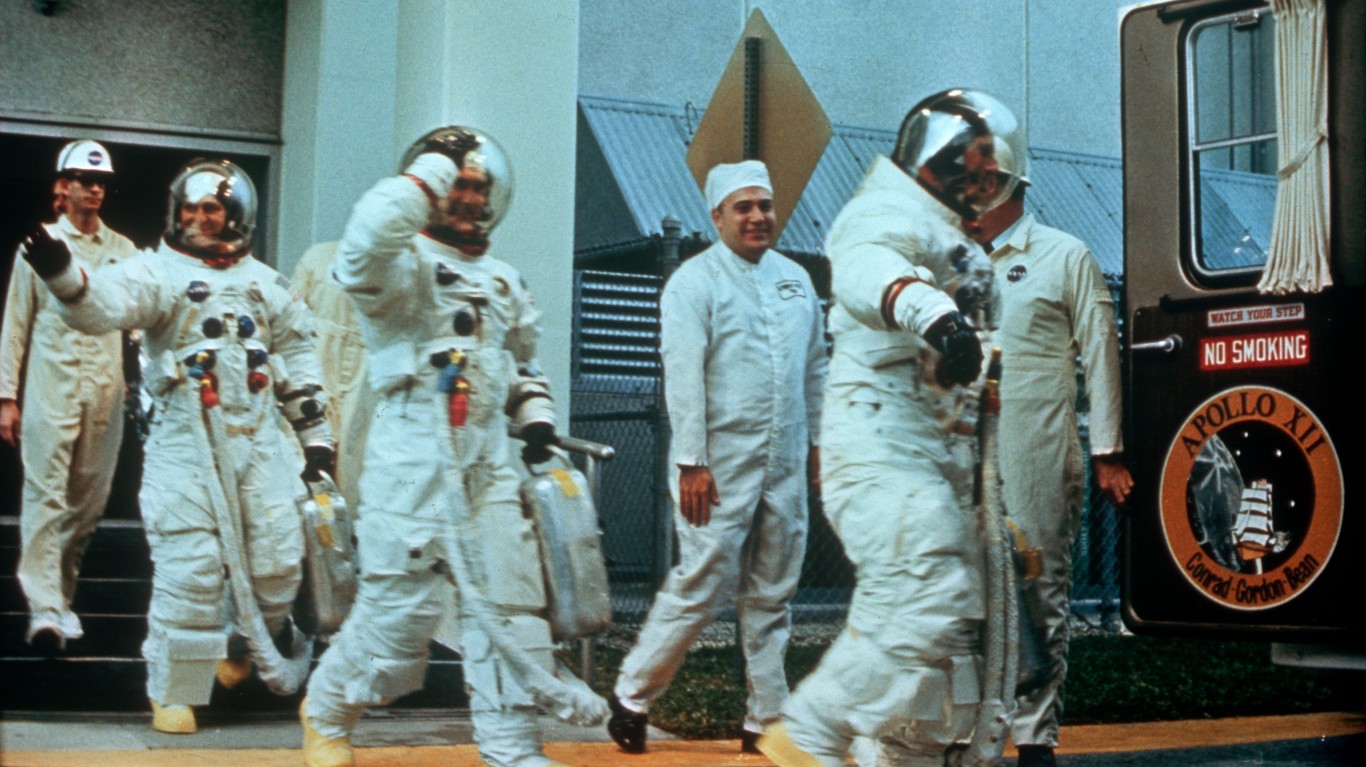
1969: Apollo 12
> Astronauts: Charles Conrad Jr., Alan L. Bean, Richard F. Gordon Jr.
The Apollo 12 mission reunited Charles Conrad and Richard Gordon. They had flown together on the Gemini 11 in 1966, a mission that set a then-record human space flight altitude of 853 miles. Conrad had flown into space twice before the Apollo 12 mission. The Apollo 12 space shot would be Alan Bean’s first space fight. He would later fly on Skylab 3. The Apollo 12 crew spent almost three times as long outside the lunar module than their Apollo 11 predecessors.
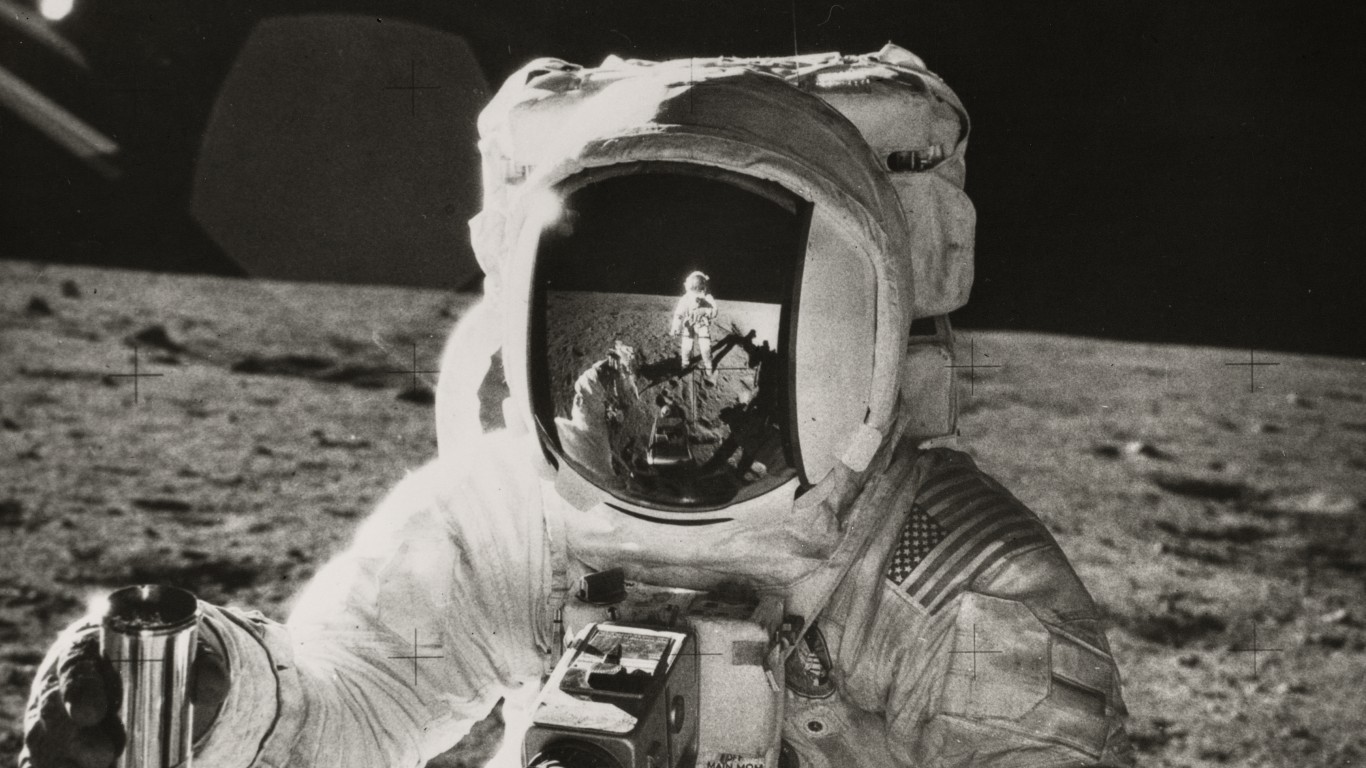
1969: Apollo 12
> Mission goals: Explore lunar surface; set up seismic, scientific, and engineering experiments; size up possible landing areas for future missions; retrieve remains of the Surveyor III spacecraft that had landed on the moon on April 20, 1967.
[in-text-ad-2]
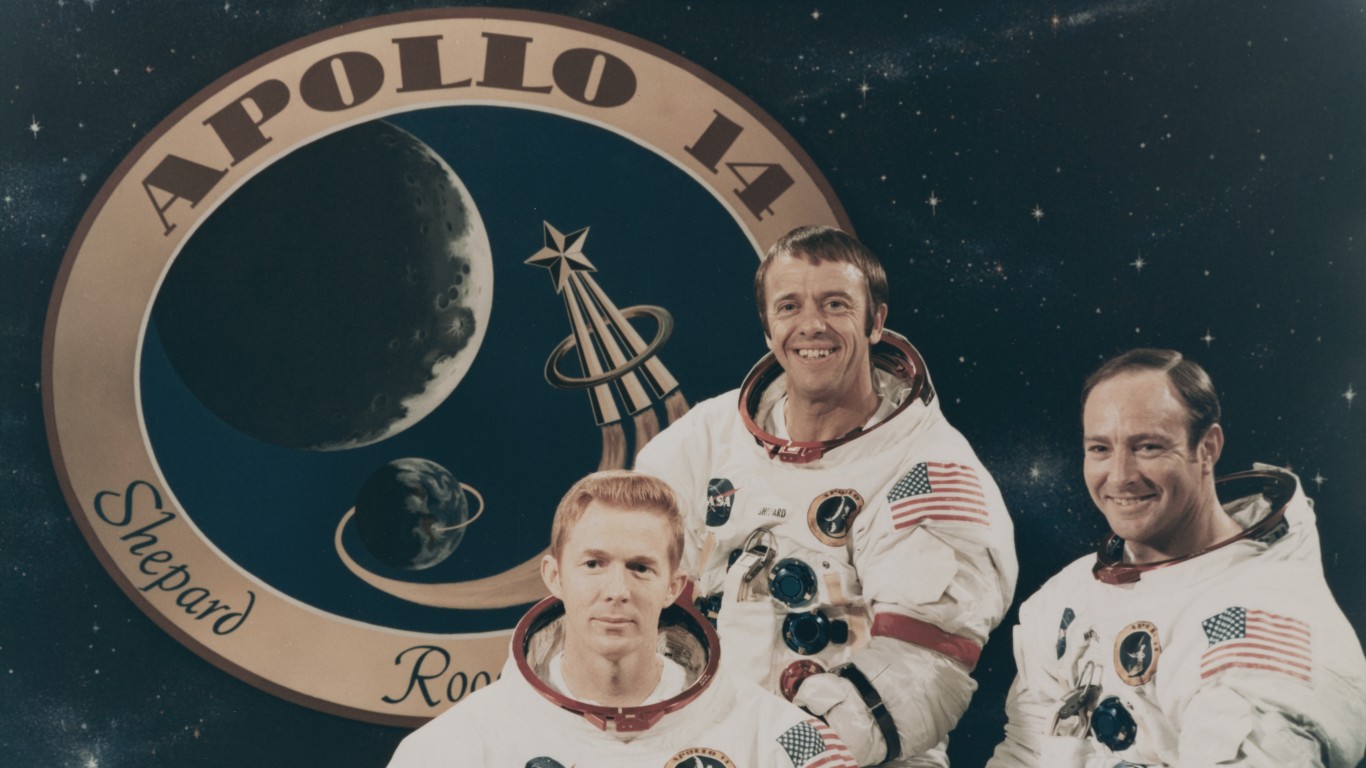
1971: Apollo 14
> Astronauts: Alan B. Shepard Jr., Edgar D. Mitchell, Stuart A. Roosa
The Apollo 14 mission marked Alan Shephard’s return to space after becoming the first American in space 10 years earlier. Shepard set a distance record by walking more than 9,000 feet on the moon, pulling a cart of tools and collecting lunar samples. He and Edgar Mitchell spent a record 33 hours and 31 minutes on the lunar surface and collected 94 pounds of material. Stuart Roosa, the pilot on the mission, would later lead NASA’s space shuttle program.
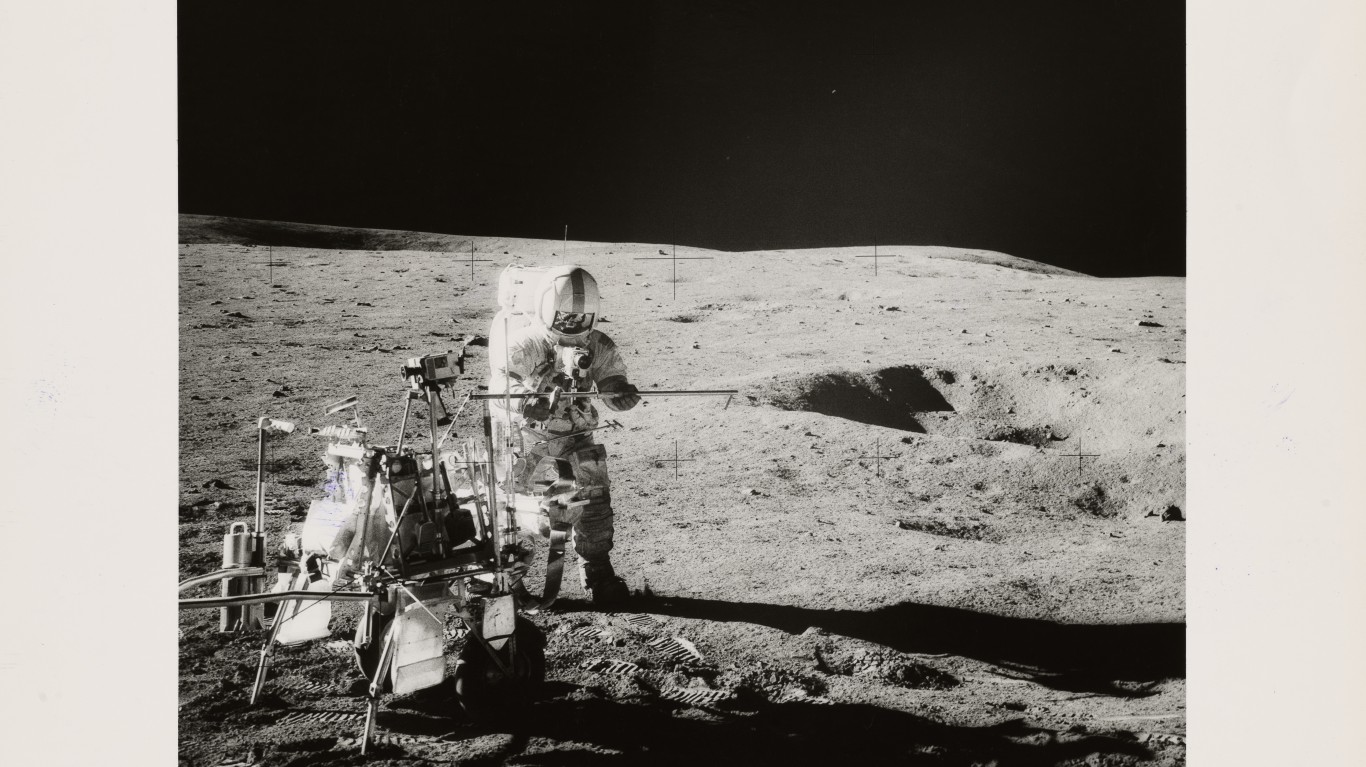
1971: Apollo 14
> Mission goals: Explore the Fra Mauro region of the moon; deploy lunar surface scientific experiments; conduct geologic investigations; photograph potential future landing sites and deep-space phenomena, such as zodiacal light.
[in-text-ad]
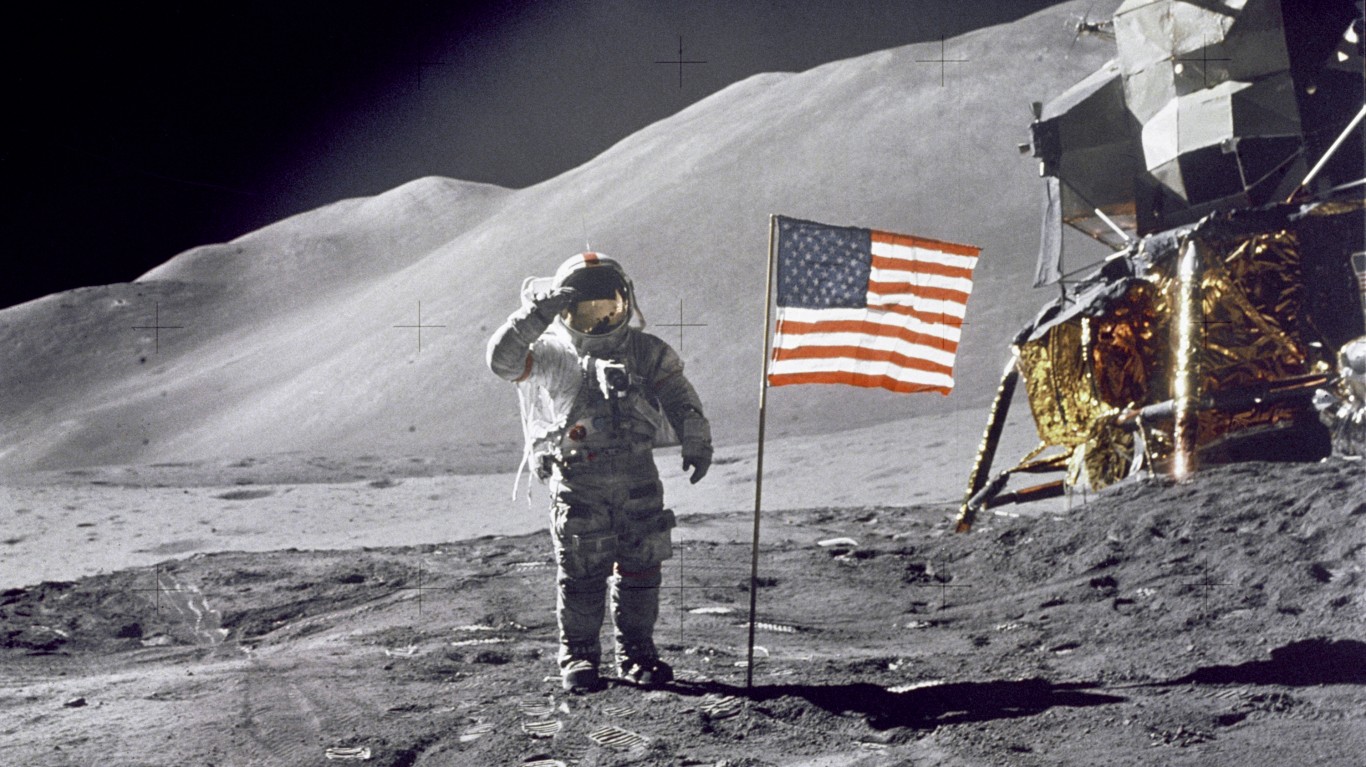
1971: Apollo 15
> Astronauts: David R. Scott, James B. Irwin, Alfred M. Worden
David Scott had already flown on the Gemini 8 and Apollo 9 space shots before Apollo 15. Scott accumulated more than 546 hours in space during his astronaut career. He and James Irwin spent almost three days on the lunar surface, exploring the Hadley Rille and Apennine Mountains regions. They drove their Lunar Rover 1, the first lunar roving vehicle, 18 miles, the longest distance traveled on the moon, and collected 180 pounds of lunar samples. During the return flight to earth, pilot Alfred Worden took a space walk. He was deeply moved by his experiences and published a book of poetry about them in 1974.
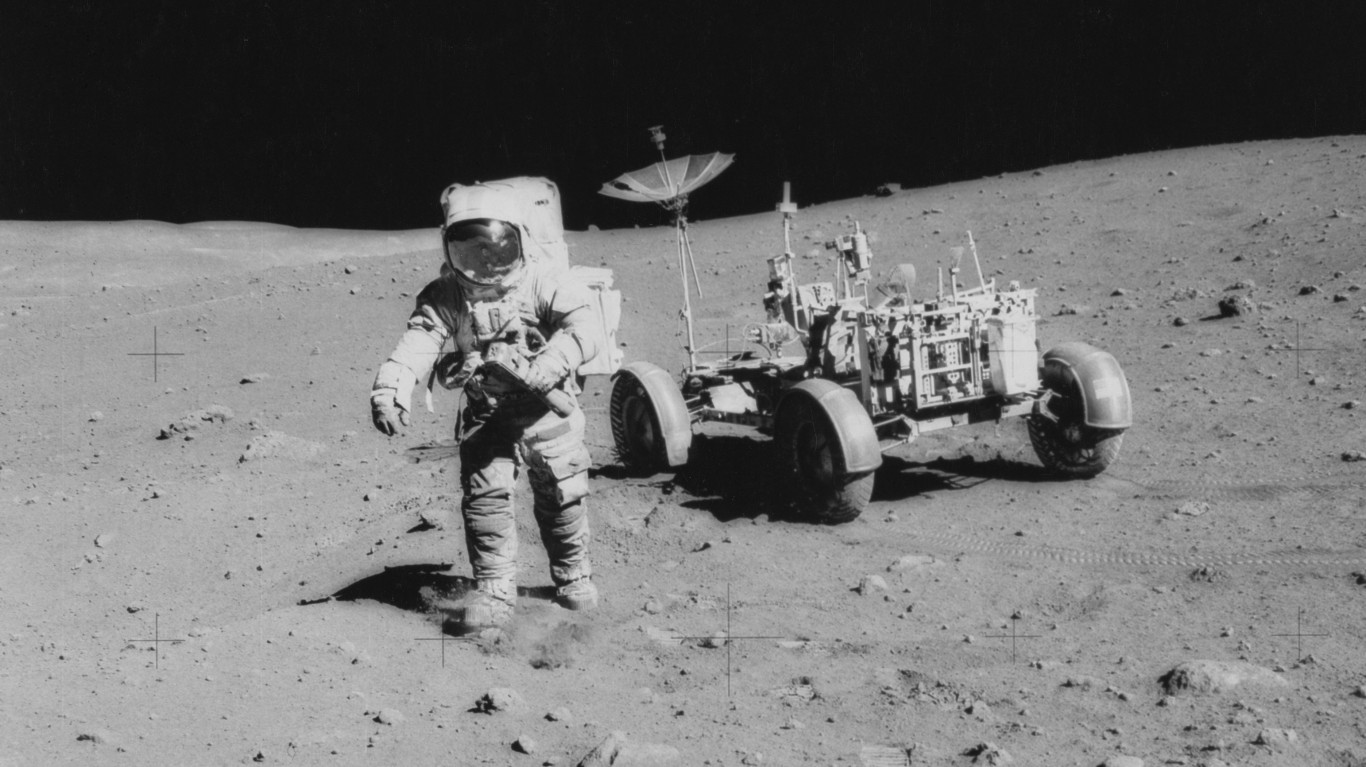
1971: Apollo 15
> Mission goals: Explore the Hadley-Apennine area; activate lunar surface scientific experiments; perform lunar orbital experiments and various photographic tasks; launch a subsatellite into lunar orbit designed to investigate the moon’s mass and gravitational variations.
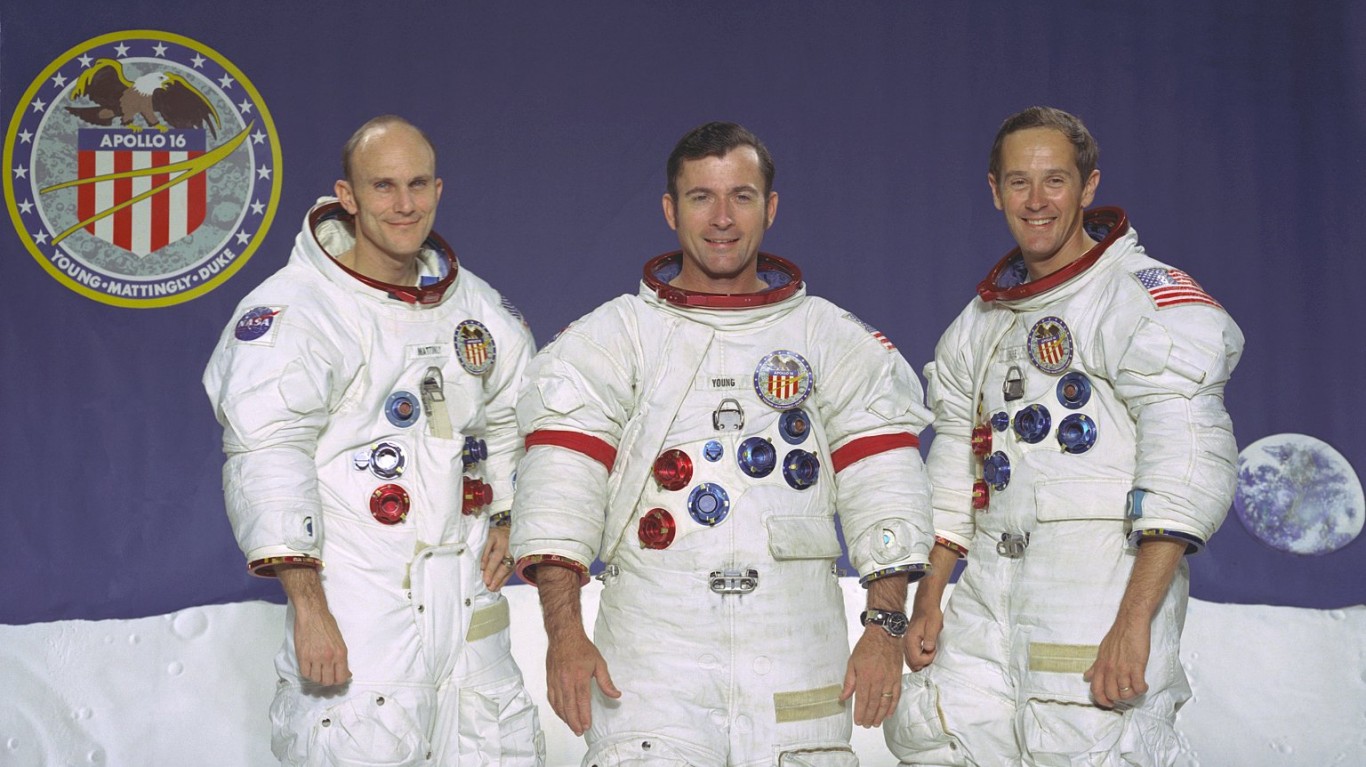
1972: Apollo 16
> Astronauts: John W. Young, Charles M. Duke Jr., Thomas K. Mattingly II
John Young was the first American astronaut to make six space flights. He participated in both the Gemini and Apollo programs. He was the copilot with Virgil Grissom on Gemini 3, the first U.S. two-man spaceflight, in 1965. Young and Charles Duke were on the moon for 71 hours and spent 21 hours in extravehicular activities, gathering 211 pounds of lunar materials. After retiring from NASA, Duke became an entrepreneur, minister, and author, publishing his autobiography, “Moonwalk,” in 1990. Thomas “Ken” Mattinglywas set to be the pilot for the ill-fated Apollo 13 mission but was removed 72 hours before launch because of exposure to the German measles. He got into space as the pilot of Apollo 16. He would later be commander for the last orbital test flight of the Space Shuttle Columbia in 1982, and the commander of the Discovery three years later.
[in-text-ad-2]
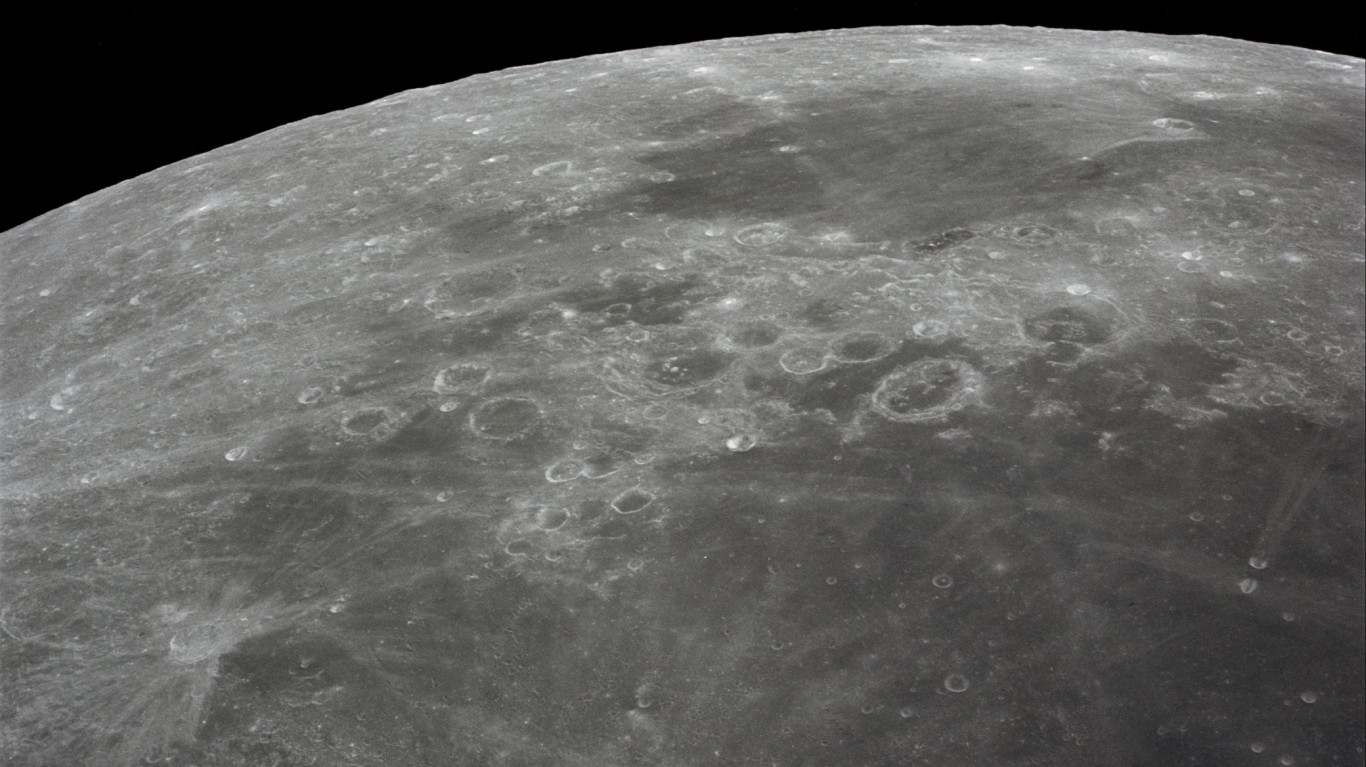
1972: Apollo 16
> Mission goals: Sample materials at the unexplored Descartes region; activate surface experiments; conduct in-flight experiments and photographic tasks from lunar orbit; perform experiments involving zero gravity.
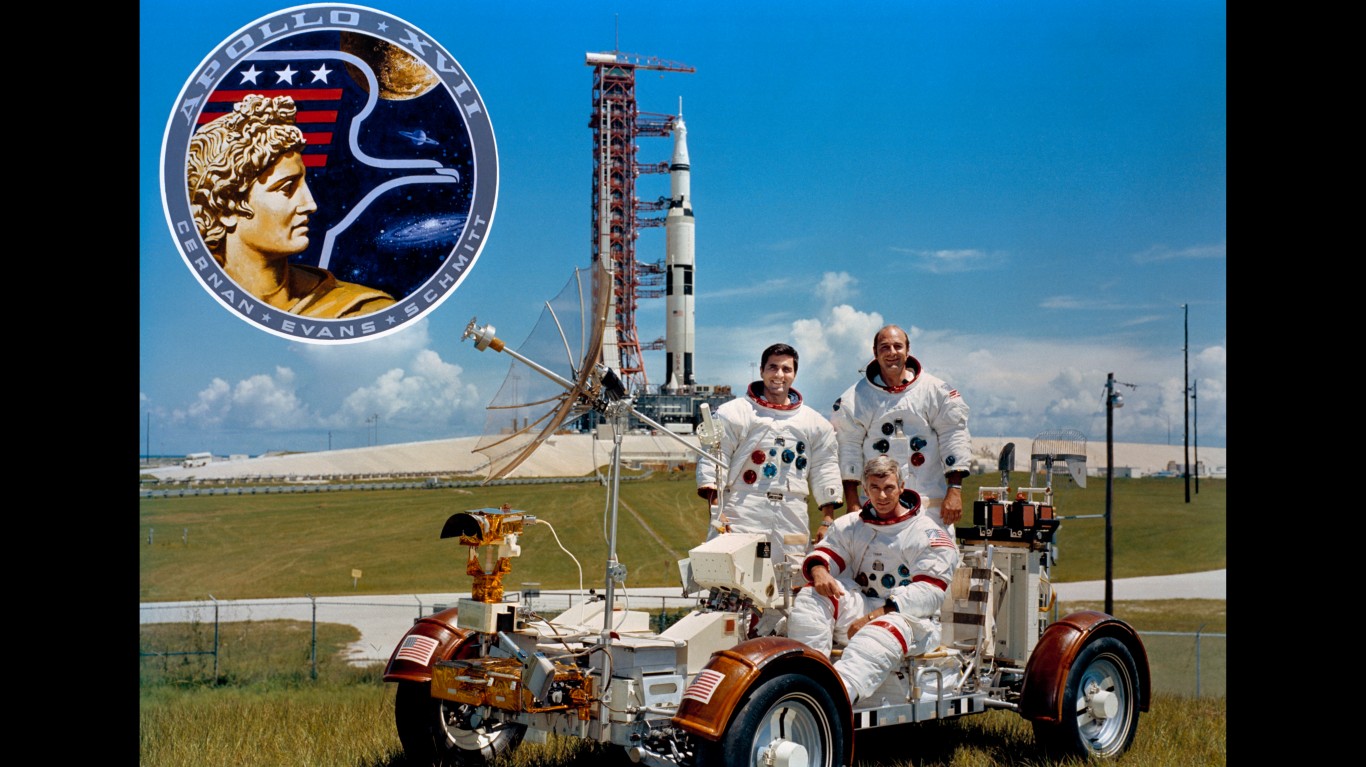
1972: Apollo 17
> Astronauts: Eugene A. Cernan, Harrison H. Schmitt, Ronald E. Evans
Eugene A. Cernan and Harrison H. Schmitt were the last people to leave their footprints on the moon. Cernan had flown in two prior space flights. He was the second American to walk in space during the Gemini 9 flight in 1966 and he was the pilot of the Apollo 10 mission, the last space shot before the historic moon landing by Apollo 11. Schmitt, a geologist, was the only astronaut to have walked on the moon without a military background. He later became a U.S. senator from New Mexico and wrote the book “Return to the Moon: Exploration, Enterprise, and Energy in the Human Settlement of Space.” Command module pilot Ronald E. Evans walked in space for an hour and six minutes during the return flight to Earth.
Apollo 17 established the following records in lunar exploration: longest manned lunar landing flight (301 hours and 51 minutes); longest lunar surface extravehicular activities (22 hours and four minutes); and largest lunar sample return (an estimated 249 pounds).
[in-text-ad]
1972: Apollo 17
> Mission goals: Conduct geological surveying and material sampling in the Taurus-Littrow area; build on previous scientific experiments and conduct heat-flow and biomedical tests.
The Average American Is Losing Momentum On Their Savings Every Day (Sponsor)
If you’re like many Americans and keep your money ‘safe’ in a checking or savings account, think again. The average yield on a savings account is a paltry .4%1 today. Checking accounts are even worse.
But there is good news. To win qualified customers, some accounts are paying more than 7x the national average. That’s an incredible way to keep your money safe and earn more at the same time. Our top pick for high yield savings accounts includes other benefits as well. You can earn up to 4.00% with a Checking & Savings Account today Sign up and get up to $300 with direct deposit. No account fees. FDIC Insured.
Click here to see how much more you could be earning on your savings today. It takes just a few minutes to open an account to make your money work for you.
Thank you for reading! Have some feedback for us?
Contact the 24/7 Wall St. editorial team.
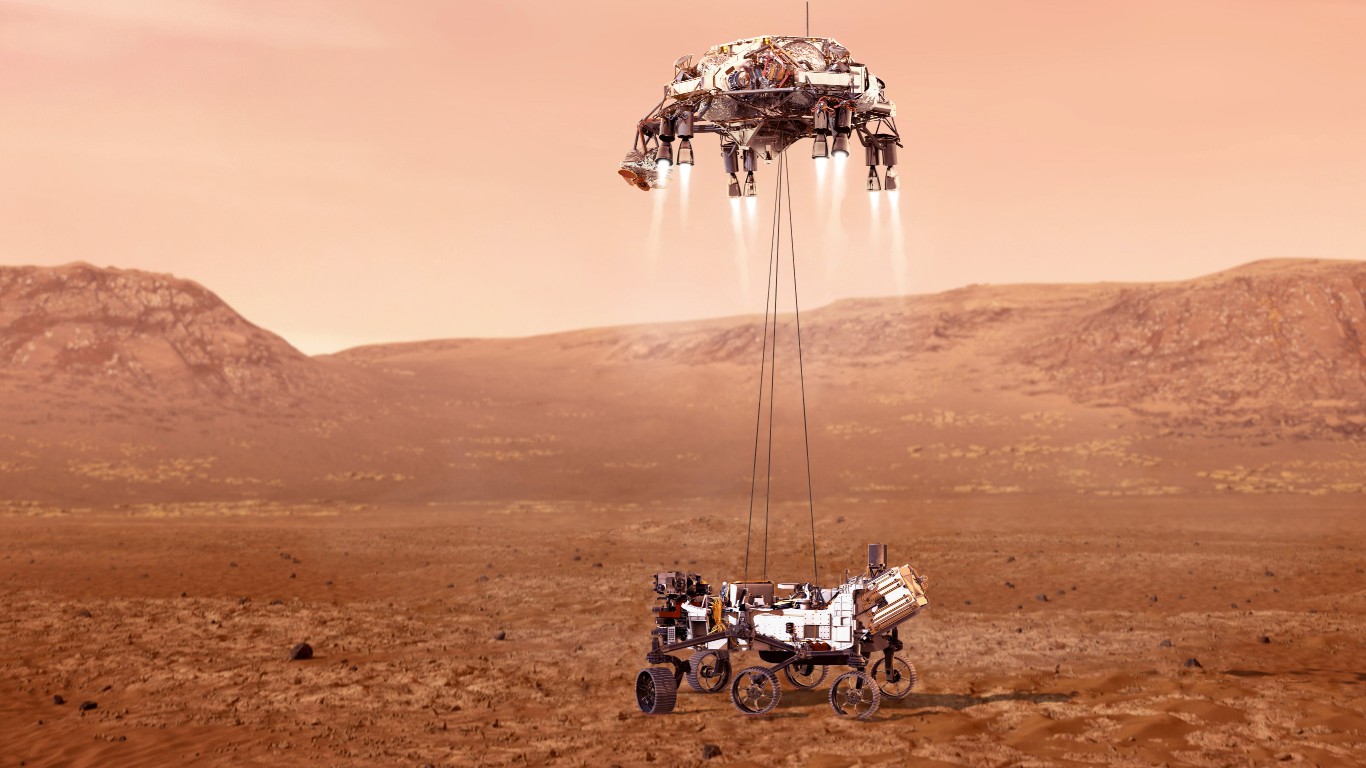 24/7 Wall St.
24/7 Wall St.